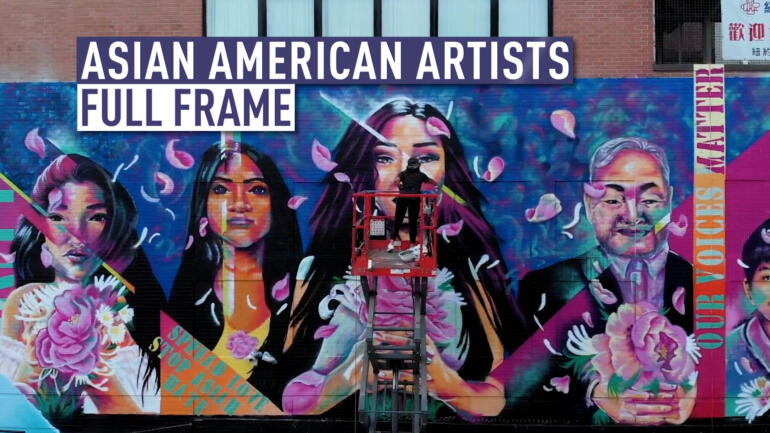From art to literature to music, Asian-American artists have been underrepresented in the American mainstream. But that’s changing. We meet three creatives who are transforming their fields.
Connecting through music
Tina Guo has had a diverse career in music: She’s played cello internationally with classical symphonies, performed heavy metal as an electric cellist and played on video game, TV and movie soundtracks. She has been nominated for a Grammy Award and the BRIT female artist of the year.
Born in Shanghai and raised in the United States, Guo’s music blends styles and defies expectations.
“People do say, ‘Tina, you’re all over the place artistically.’ Musically, I think I was using it as a tool because I was so desiring connection… So I think trying everything, trying to see how I can connect with people through music, has kind of been like a driving force,” Guo said.
In middle school, she was introduced to heavy metal music.
“I think it was just very there’s a lot of not masculine energy, but just, like, aggressive, like dark and I think I related to it because of my own frustrations that I wasn’t able to vocalize as a cello robot growing up,” Guo said. ” I think that was a seed of thinking, I wish I could do a different type of music.”
Guo has reached what many might consider the pinnacle of success as a recording artist, signing with a major label. But she said she wants to focus more on composing and having creative freedom. “I feel like a lot of artists are going through this right now, so I actually might be leaving, going back to doing my own thing and self funding everything, ” Guo said.
Her next project, she hopes is “a major TV project, something that would allow me to experiment with my love for tribal, primal music and ….a lot of recording sessions, working with other artists, and I think just expressing myself musically and artistically.”
A new take on the Old West
The genre of the American Western has been adopted in all parts of the world, through books, movies and TV shows. But the stories of the wild West have rarely focused on one group that was essential in exploring and building out these new frontiers — Chinese immigrants.
“I wanted to put an Asian American in the West…I wanted to put someone in it that I could relate to, that I hadn’t seen very often in other works. And so it does come out of this really basic desire to see yourself represented,” said Tom Lin, the author of The Thousand Crimes of Ming Tsu.
Lin’s book is set in the mid-19th century. At that time, news of the California gold rush prompted large-scale Chinese immigration.
When they failed to strike it rich in gold, many Chinese immigrants turned to other jobs, including building the transcontinental railroad. The work was strenuous and dangerous, and hostility towards Chinese workers made living in the United States even more risky.
“We have almost no records of first-hand experiences of working the railroad as a Chinese laborer,” Lin said. “And it wasn’t because presumably they did write things down — they did keep journals — but it was just simply never deemed important enough to preserve in the archive.”
He added, “In spite of everything, in spite of forgetting their names and their experiences, their labor has changed the way that this country developed. And I think that for me was a very profound moment of this is something that we should pay more attention.”
‘Spread love, stop Asian hate’
In 2021, amidst a rise in anti-Asian violence during the pandemic, multimedia artist and muralist Bianca Romero realized that the uptick in violence had stirred up something inside of her.
Romero, who is Asian American, partnered with the New York City Mayor’s office and painted a massive 2,000 square foot public mural that’s a portrait of five Asians with the words: “Act justly, love mercy, walk humbly.”
But finding a wall to paint proved challenging. Businesses in Chinatown were scared drawing attention to their building would bring more crime, she said.
“They didn’t want any attention, whether it was good or bad,” Romero said. “It’s just so against the culture, especially during a time when people were getting beaten on the street.”
The mural is now on a wall in Manhattan’s Chinatown. With the help of two assistants, it took six weeks to finish.
“I just felt it represented that community, just a lot of times feeling very invisible. And I just wanted to kind of break that cycle and just paint something that was larger that would command attention,” she said.
 CGTN America
CGTN America
